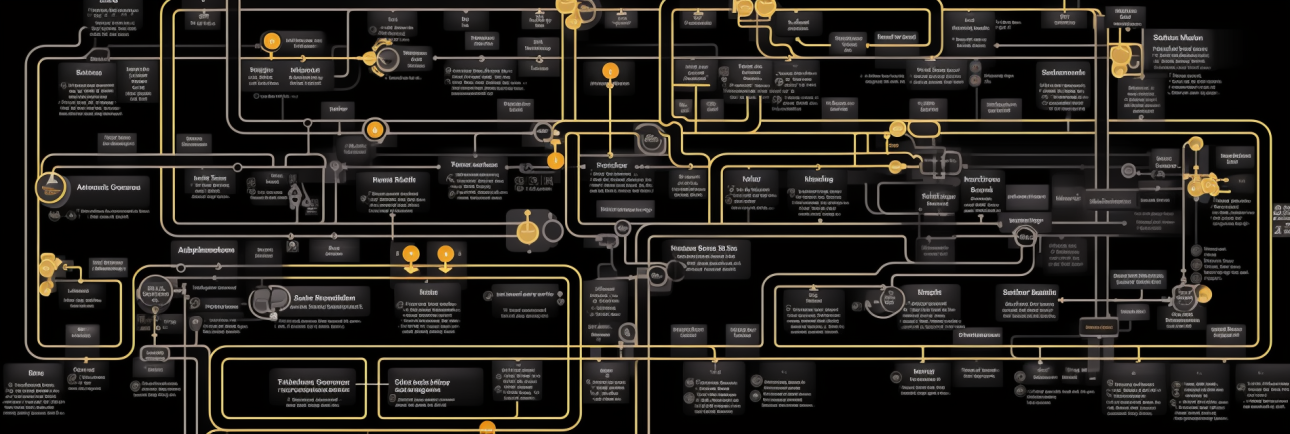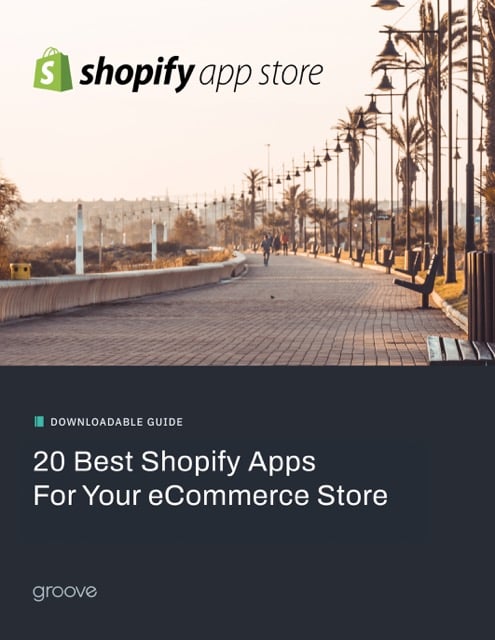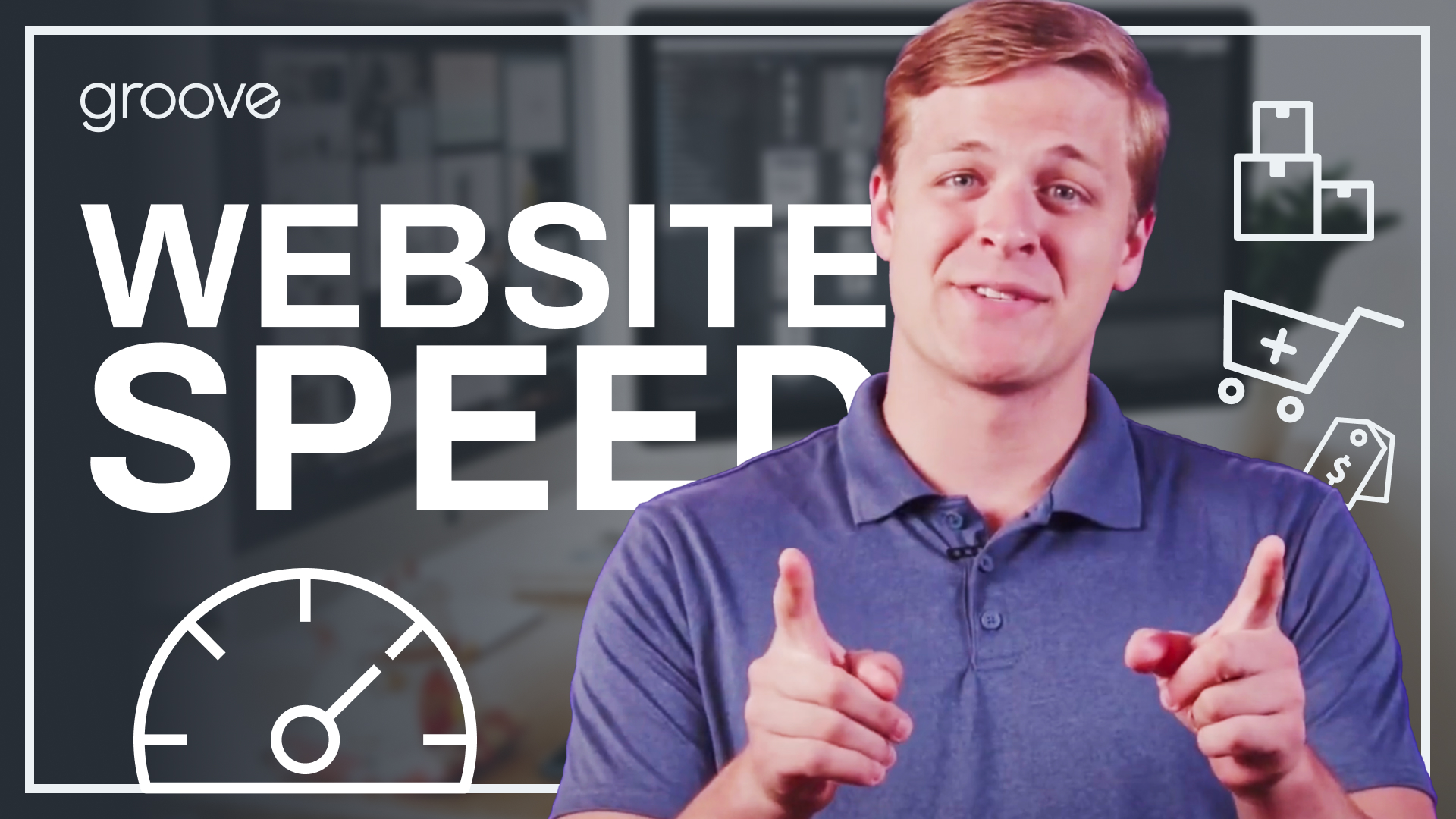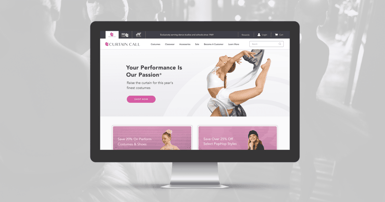With countless studies having emphasized website speed’s impact on various aspects of user experience and business metrics, it's time we delve into how to optimize your site for speed and ensure a successful online presence.
At Groove Commerce, we provide expert insights into enhancing your eCommerce experience on platforms like BigCommerce and Shopify. Let's explore how our team increases website speed, and why it's crucial for eCommerce merchants in every industry.
Your Questions, Answered
User experience is paramount for retaining visitors, and website speed is a critical factor. We recommend prioritizing fast loading times to ensure smooth navigation, enhancing user engagement and satisfaction.
Slow loading pages can lead to higher bounce rates, as visitors tend to leave the site quickly. Strive to optimize speed to keep users engaged, reducing bounce rates, and ultimately increasing conversions.
Website speed is a ranking factor for search engines like Google. Employ strategies to improve speed, boosting visibility and search engine positioning.
Faster websites provide a seamless user experience, contributing to higher conversion rates. Focus on speed optimization, which will directly impacting the bottom line.
A fast website creates a positive impression, reflects brand efficiency, and can set you apart in a saturated market. Leverage speed as a competitive advantage, aligning with customer-centric principles.
Website speed affects all users, including those using assistive technologies. We ensure our sites are responsive and quick to load, enhancing accessibility and inclusivity.
Factors such as external scripts, images, videos, and optimization techniques play a role. Groove Commerce analyzes and optimizes these elements, offering a comprehensive solution.
Strategies we recommend include image optimization, redirect management, minification, mobile optimization, and reducing plugins.
The Importance of User Experience
The online customer journey begins with user experience, and at the core of this experience lies the speed of your website.

When pages load quickly, users feel a sense of satisfaction and engagement, making them more likely to explore further. In an era where every second counts, faster loading times create a seamless browsing environment, increasing conversion rates are CLTV (Customer Lifetime Value).
At Groove Commerce, we understand the intricate connection between speed and satisfaction, focusing on strategies that reduce load times and increase user retention.
Reduced Bounce Rate
The bounce rate signifies how many users leave your site without interacting, and a slow website dramatically contributes to this issue.
Research indicates a direct correlation between page load time and bounce rates. For example, a WebsiteBuilderExpert study states that the chance of a bounce increases by 32% when page load time extends from 1 to 3 seconds. Such an alarming statistic illustrates the urgency for eCommerce businesses to optimize site speed.
By reducing load times, you can effectively engage visitors and prevent them from leaving your site prematurely.
SEO Ranking
With so many competing retailers, visibility is key to success. Search engines like Google prioritize site speed as a significant ranking factor to what is shown first on SERPs (Search Engine Results Pages).
According to the same WebsiteBuilderExpert mentioned above, the average page speed for the first page of Google Search Results is a mere 1.65 seconds. By ensuring your site meets or exceeds this benchmark, you align with search engine expectations and enhance your online presence.
Note: It is not always possible to achieve this with eCommerce sites due to the technical burden of third-party integrations. Website speed is a balancing act, not a hard and fast rule.
Faster sites not only cater to human users but also fulfill search engine algorithm requirements, leading to better visibility in search results.
Conversion Rates
Conversion rates are directly tied to your website’s performance, particularly its speed.
A study by Think with Google reveals that a one-second improvement in website speed can increase conversions for mobile users by up to 27%. In a highly competitive eCommerce landscape, every second you shave off your loading time could translate into significant sales growth.
Optimizing site speed is not just about user retention; it's about transforming those users into customers. Leveraging speed as a conversion tool allows you to capitalize on every visitor, turning interest into tangible sales.
Competitive Edge
In a market saturated with options, a faster site can be your secret weapon. It offers an immediate advantage over slower competitors, as users generally favor sites that respond quickly to their actions.

Speed becomes a distinguishing factor that sets you apart, positioning your brand as more efficient and customer-centric. It is not merely a technical consideration but a vital part of your business's identity and value proposition.
Accessibility
Accessibility is an often-overlooked aspect of website design, but it plays a crucial role in inclusivity. Quick loading times are not only beneficial for the average user but also essential for those using assistive technology.
Ensuring your website is accessible and fast for all users demonstrates a commitment to equality and caters to a broader audience. Whether it's screen readers for visually impaired users or other assistive tools, a faster site ensures that everyone has an equal opportunity to engage with your content.
The importance of website speed cannot be overstated. From user satisfaction to SEO ranking, from conversion rates to competitive advantage, speed impacts every facet of your online presence.
Factors Affecting Website Speed
External Scripts
Integrations that add external scripts to your site can significantly affect its speed. Whether it's applications, plugins, or custom functionality, each addition must be evaluated judiciously. Every script takes away from your site's speed, and though these integrations may enhance functionality, they can also hamper performance.
The key is finding a balance that maintains site speed without compromising essential features. Having a seasoned and unbiased developer take a look “under the hood” of your website’s HTML is the first step towards identifying what legacy scripts can be left behind or consolidated.
Images

Images play a vital role in conveying the visual appeal of your eCommerce site, but they are also one of the major contributors to slow page loading. The number, size, and quality of images directly impact page speed, making it crucial to optimize them without losing visual integrity.
Effective strategies include:
- Compression
- Proper Sizing
- Responsive design techniques to adapt images to different screen sizes
Embedded Videos
Embedded videos, while enriching the content experience, can considerably increase page load time. Videos are inherently large files, and when embedded directly on a page, they can delay the loading process.
The challenge lies in utilizing videos to engage users without compromising speed. Strategies like click-to-load videos, video optimization, and proper placement can mitigate these speed issues.
Website Optimization
Optimization is a multifaceted approach that encompasses every aspect of your site, from code to content. Techniques like image optimization, redirect reduction, caching, minification, font optimization, and JavaScript optimization are essential in achieving optimal site speed.
This complex process requires a detailed understanding of how each component interacts and contributes to the overall performance of the site. By investing in professional optimization strategies, you ensure that each element of your website is fine-tuned for speed.
Mobile-First Design
With a substantial portion of online shopping now occurring on mobile devices, optimizing for mobile is no longer optional—it's imperative. Mobile-first design emphasizes the need to prioritize the mobile experience, ensuring that sites are responsive, fast, and user-friendly on smaller screens.
From reducing plugins to optimizing images and code, mobile-first design takes a holistic approach to create a seamless mobile experience. This approach is about understanding and catering to modern shopping behaviors.
Plugins, Apps, and Integrations
Each additional plugin, app, or integration contributes to the page load time, often in ways that are out of your direct control. These components, while often essential for various functionalities, must be carefully selected and optimized. Overloading your site with unnecessary additions can severely affect its speed, leading to user dissatisfaction.

This emphasizes the importance of having a clear strategy and expert guidance in selecting and integrating these components.
Understanding and addressing the factors that affect website speed is pivotal for eCommerce success. Each element, whether it's images, videos, or external scripts, contributes to the overall user experience.
Website Optimization Strategies
Optimizing Images
Images play a central role in eCommerce, providing customers with visual information about products. However, without proper optimization, they can slow down the loading speed of a website.
Compressing images with tools like Image Compressor can reduce the file size without losing the visual quality, leading to faster page loading. Resizing images ensures that they fit the intended display size, preventing unnecessary strain on loading. Implementing lazy loading further cuts down load times, allowing images to load only when they are within view on the screen. At Groove Commerce, we have refined these techniques to maximize visual appeal without compromising website speed, enhancing user engagement, and satisfaction.
Redirects, Videos, and Caching
Minimizing redirects, optimizing video loading, and implementing effective caching strategies are key to website speed. Unnecessary redirects can add delays, but a well-structured website with minimal redirects ensures faster navigation.

Click-to-load videos, as opposed to embedded videos, save loading time, as they only load when a user clicks on them. Caching, both browser and server-side, stores frequently accessed resources, speeding up subsequent visits.
Minification and Limiting Webfonts
Every detail matters when optimizing a website. Minification of HTML, CSS, and Javascript files reduces their size, making them load faster. This process involves removing unnecessary characters and spaces, streamlining the code without altering functionality.
Similarly, limiting the use of multiple custom fonts avoids additional HTTP requests, balancing visual design with speed. At Groove Commerce, we work closely with our clients to tailor these elements to their specific needs, ensuring a clean and efficient website design that retains its stylistic integrity.
Javascript Optimization and Tools
Javascript is a powerful tool in modern web design, but it needs careful management. By employing techniques like `async` and `defer`, non-essential scripts can be set to load at optimal times, improving page loading speed.
Additionally, tools such as PageSpeed Insights offer in-depth insights into site speed and performance, allowing for targeted improvements. Our team at Groove Commerce leverages these techniques and tools to craft robust and blazing-fast websites, aligning performance with aesthetic appeal and functional efficiency.
Mobile Optimization and Reducing Plugins
A mobile-first design approach ensures that websites look and perform well on smartphones and tablets. The careful selection and management of plugins, apps, and integrations prevent them from adding unnecessary load times.
Website optimization is an intricate and continuous process that requires a holistic approach. From images and videos to mobile design and plugins, each aspect contributes to the overall user experience.
Conclusion
Optimizing your website's performance is not a luxury; it's a necessity. From the intricate task of image optimization to an innovative mobile-first design approach, every detail contributes to the overall efficacy and allure of your site.
At Groove Commerce, we understand that website optimization is a multifaceted journey, one that requires a blend of creativity, technical know-how, and a relentless focus on the user's experience. Our seasoned team of designers, developers, and marketers work in harmony with platforms like BigCommerce & Shopify to craft strategies tailored to your specific needs.
Whether it's compressing images, minimizing redirects, caching, or responsive mobile design, our comprehensive approach ensures that each aspect of your site is finely tuned. We embrace the challenge of balancing aesthetics with functionality, creating not only visually stunning websites but ones that load quickly, engage your audience, and convert visits into sales.
Entrust us with your eCommerce website optimization, and experience the Groove Commerce difference. We're committed to providing solutions that elevate your online presence, foster growth, and solidify your competitive edge in the ever-evolving digital marketplace. Reach out to us today, and let's embark on a journey towards a faster, more efficient, and more successful eCommerce experience.

E-BOOK
20 Best Shopify Apps For Your eCommerce Store
Explore tags:
About the author
Subscribe to the Groove Newsletter
Get the latest updates and insights straight to your inbox





